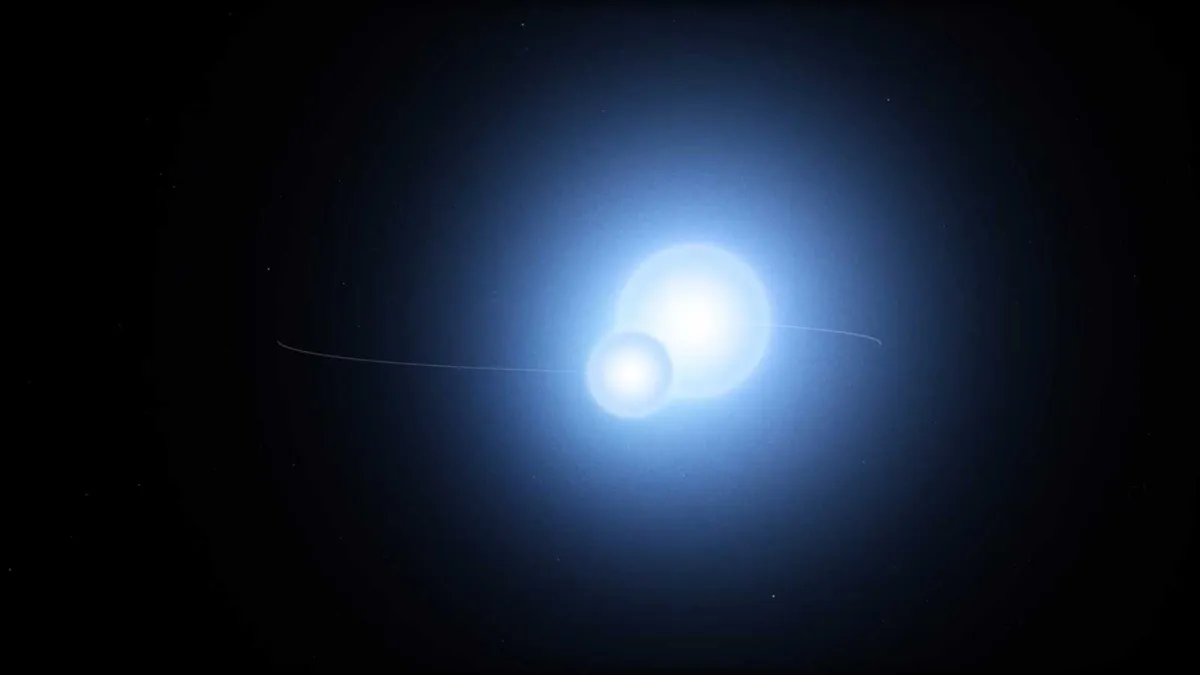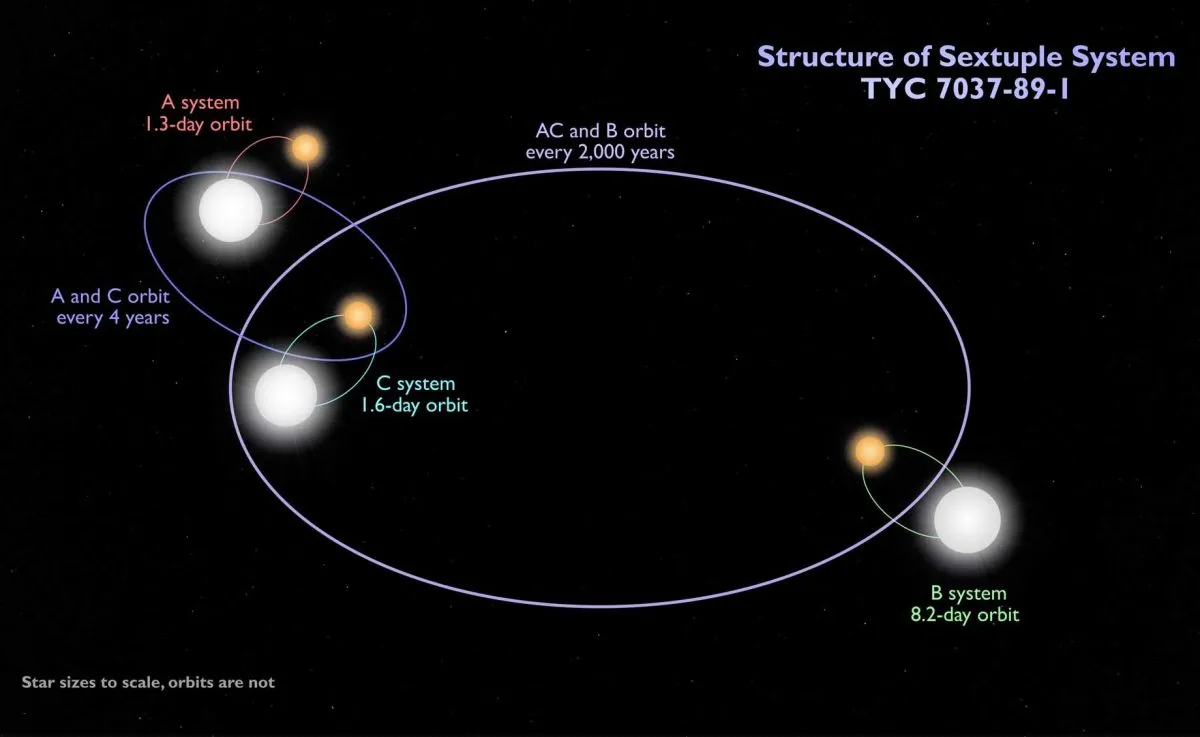Are you an eclipse chaser? Imagine this.
In 2021, a team of astronomers announced the discovery of the first ever known 6-star system in which all 6 stars undergo regular eclipses.
The system, known as TYC 7037-89-1, consists of 3 pairs of stars known as 'eclipsing binaries' because they alternatively pass in front of each other in their orbits, from our perspective.
A famous example of one such star is Thuban, which used to be Earth's Pole Star.

The system is about 1,900 lightyears away in the constellation Eridanus. Every time one of the pair of binary stars eclipses the other, it causes a dip in the system's overall brightness.
The binary pairs have been designated A, B and C.
The stars in the A and C pairs orbit their partners about once every 1.5 Earth days, while the pairs themselves orbit each other about once every 4 years.
In the B system, the2 stars orbit each other every 8 days, but orbit around the inner binary systems A and C around every 2,000 years.
This is because they are so much further away.

In each system the primary star is slightly bigger and more massive than the Sun, yet about as hot. The secondary stars are all roughly half the Sun's size and a third as hot.
These eclipsing binaries were discovered by NASA's TESS exoplanet-hunting mission.
The team of astronomers behind the study were able to use TESS data to analyse the stellar magnitude of around 80 million stars, and how that brightness changed over time.
They discovered around 450,000 candidates for eclipsing binary stars and found at least 100 that contained potentially 3 or more stars, including the 6-star system.

While the discovery of 3 pairs of eclipsing binaries certainly sparks the imagination and reveals insight into the workings of the cosmos, the mechanics of this system also provide important data for the astronomers to analyse.
The changes in brightness as the stars orbit one another can yield insight into the stars' sizes, masses, temperatures: even the distance from Earth to the system.
TYC 7037-89-1 is particularly interesting because the team want to find out how the primary and secondary stars across the system have developed over time to become so similar to one another
The study was led by Brian P. Powell and Veselin Kostov at NASA’s Goddard Space Flight Center.
The team also included Saul Rappaport at MIT, Tamás Borkovits at the University of Szeged in Hungary, Petr Zasche at Charles University in the Czech Republic, and Andrei Tokovinin at NSF’s NOIRLab.
The study TIC 168789840: A Sextuply-Eclipsing Sextuple Star System is available to read at arxiv.org.
